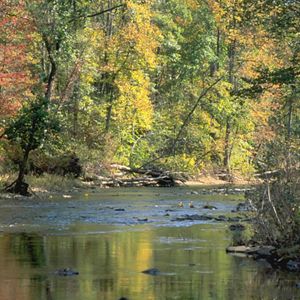Description
Fort Hill, with its limestone glades and rock outcrops, is one of Maryland’s best remaining examples of a limestone forest. In the early 1700s there were 500,000 acres of undisturbed limestone forest in the state; today, only 1,500 acres remain.
On the hot, south-facing slopes of the preserve, the trees are stunted and widely scattered. This sparseness of overstory creates small, grassy openings called limestone glades, which harbor many prairie and barren species, some of which are uncommon in Maryland, such as the purple harebell, rock sandwort and northern prickly-ash or toothache tree. Other plants include yellow oak, the nationally rare tall larkspur (Delphinium exaltatum) and mountain pimpernel.
Although it is now far above sea level, Fort Hill’s limestone was formed 500 to 600 million years ago under a deep ocean. Many fossils of ocean life are found in exposed bedrock on the preserve.
Created by the steady deposition and compression of shells and coral on the ocean bottom, limestone is high in calcium carbonate. Because the soil that erodes from limestone is highly alkaline, many plants have evolved to require these high pH soils and thus are restricted to limestone areas. Animals that are specially adapted to the limestone-restricted plants also live here.
So far, 332 acres have been purchased since 1987. Management activities include maintaining a deer exclosure to prevent overbrowsing of rare plants and annual monitoring of the rare plant population.
Fort Hill’s limestone forest is fragile, so the preserve is only open to scientific research with prior permission from The Nature Conservancy. Thank you for your understanding and help in protecting this important part of Maryland’s natural heritage.

_Margaret_Donald-CC_2504x1565.jpg?crop=0%2C0%2C1565%2C1565&wid=300&hei=300&scl=5.216666666666667)




